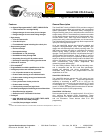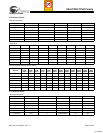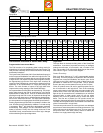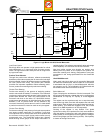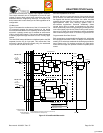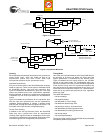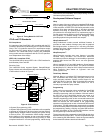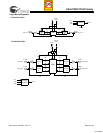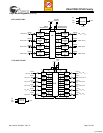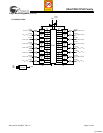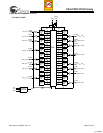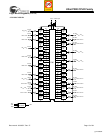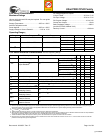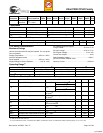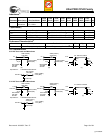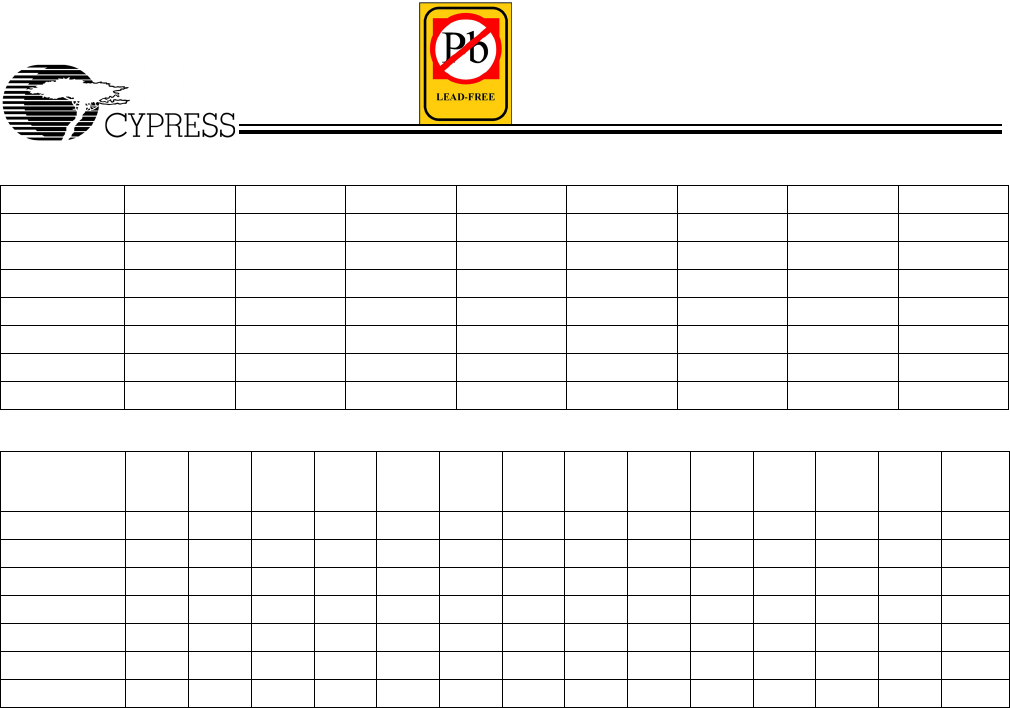
Ultra37000 CPLD Family
Document #: 38-03007 Rev. *E Page 3 of 64
Architecture Overview of Ultra37000 Family
Programmable Interconnect Matrix
The PIM consists of a completely global routing matrix for
signals from I/O pins and feedbacks from the logic blocks. The
PIM provides extremely robust interconnection to avoid fitting
and density limitations.
The inputs to the PIM consist of all I/O and dedicated input pins
and all macrocell feedbacks from within the logic blocks. The
number of PIM inputs increases with pin count and the number
of logic blocks. The outputs from the PIM are signals routed to
the appropriate logic blocks. Each logic block receives 36
inputs from the PIM and their complements, allowing for 32-bit
operations to be implemented in a single pass through the
device. The wide number of inputs to the logic block also
improves the routing capacity of the Ultra37000 family.
An important feature of the PIM is its simple timing. The propa-
gation delay through the PIM is accounted for in the timing
specifications for each device. There is no additional delay for
traveling through the PIM. In fact, all inputs travel through the
PIM. As a result, there are no route-dependent timing param-
eters on the Ultra37000 devices. The worst-case PIM delays
are incorporated in all appropriate Ultra37000 specifications.
Routing signals through the PIM is completely invisible to the
user. All routing is accomplished by software—no hand routing
is necessary. Warp
®
and third-party development packages
automatically route designs for the Ultra37000 family in a
matter of minutes. Finally, the rich routing resources of the
Ultra37000 family accommodate last minute logic changes
while maintaining fixed pin assignments.
Logic Block
The logic block is the basic building block of the Ultra37000
architecture. It consists of a product term array, an intelligent
product-term allocator, 16 macrocells, and a number of I/O
cells. The number of I/O cells varies depending on the device
used. Refer to Figure 1 for the block diagram.
Product Term Array
Each logic block features a 72 x 87 programmable product
term array. This array accepts 36 inputs from the PIM, which
originate from macrocell feedbacks and device pins. Active
LOW and active HIGH versions of each of these inputs are
generated to create the full 72-input field. The 87 product
terms in the array can be created from any of the 72 inputs.
Of the 87 product terms, 80 are for general-purpose use for
the 16 macrocells in the logic block. Four of the remaining
seven product terms in the logic block are output enable (OE)
product terms. Each of the OE product terms controls up to
eight of the 16 macrocells and is selectable on an individual
macrocell basis. In other words, each I/O cell can select
between one of two OE product terms to control the output
buffer. The first two of these four OE product terms are
available to the upper half of the I/O macrocells in a logic block.
The other two OE product terms are available to the lower half
of the I/O macrocells in a logic block.
The next two product terms in each logic block are dedicated
asynchronous set and asynchronous reset product terms. The
final product term is the product term clock. The set, reset, OE
and product term clock have polarity control to realize OR
functions in a single pass through the array.
Speed Bins
Device 200 167 154 143 125 100 83 66
CY37032V X X
CY37064V X X
CY37128V X X
CY37192V XX
CY37256V XX
CY37384V XX
CY37512V XX
Device-Package Offering and I/O Count
Device
44-
Lead
TQFP
44-
Lead
CLCC
48-
Lead
FBGA
84-
Lead
CLCC
100-
Lead
TQFP
100-
Lead
FBGA
160-
Lead
TQFP
160-
Lead
CQFP
208-
Lead
PQFP
208-
Lead
CQFP
292-
Lead
PBGA
256-
Lead
FBGA
388-
Lead
PBGA
400-
Lead
FBGA
CY37032V 37 37
CY37064V 37 37 37 69 69
CY37128V 69 69 85 133
CY37192V 125
CY37256V 133 133 165 197 197
CY37384V 165 197
CY37512V 165 165 197 269 269
[+] Feedback



